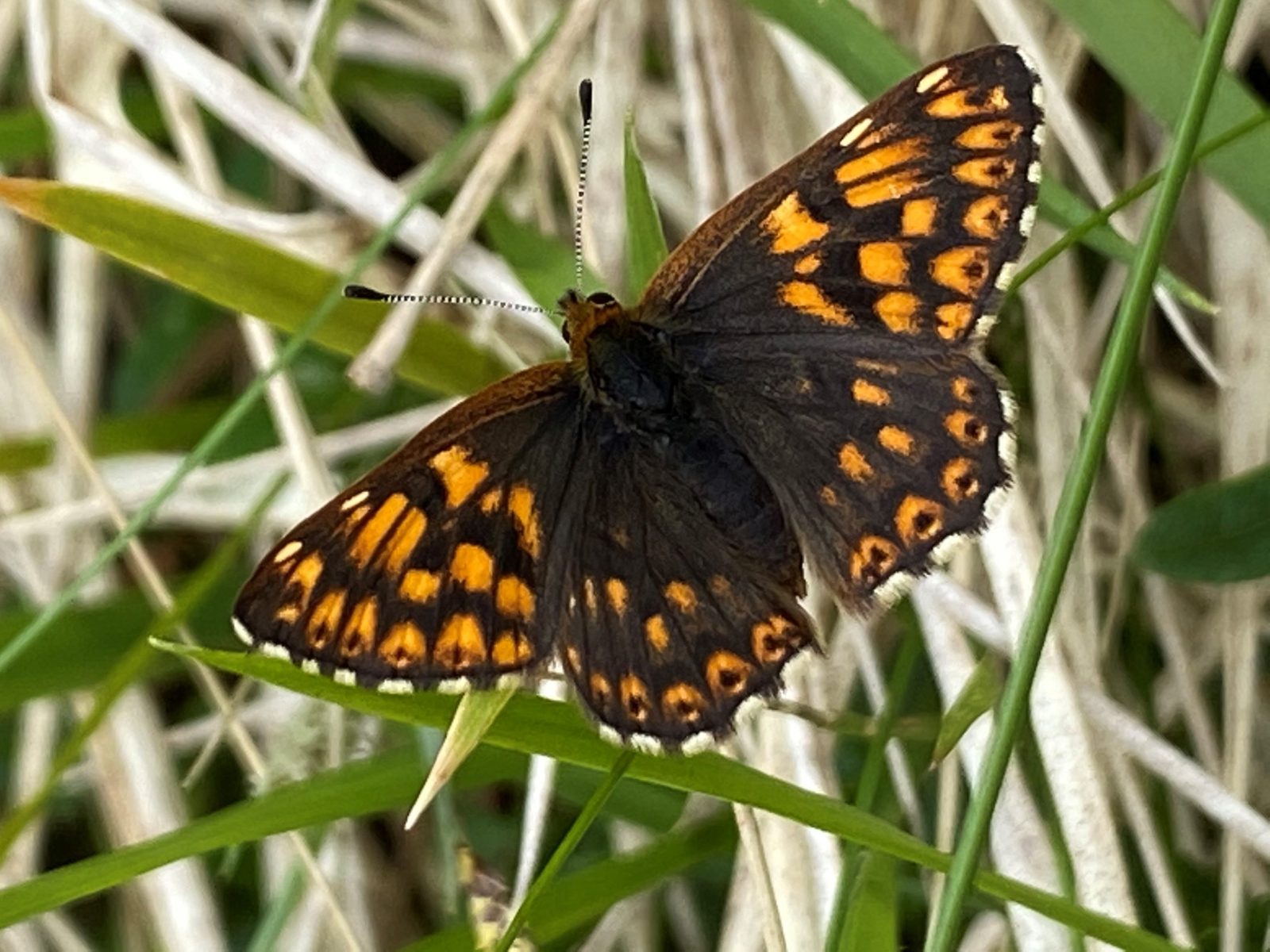A joint project between the Royal Agricultural University (RAU) and Cirencester Golf Club has won a prestigious conservation award.
Students from the RAU’s British Wildlife Conservation course have been working to improve an area of grassland at the Club which is a habitat for caterpillars of the nationally rare Duke of Burgundy fritillary butterfly and the project was recently named as Outstanding Environmental Project 2022 at this year’s Golf Environment Awards.
RAU course leader Dr Ian Grange said: “The Duke of Burgundy butterfly requires limestone grassland which is now quite a scarce habitat. As well as the scarcity, the remaining habitat also needs to be in just the right condition with a balance of grassland, scrub, and a supply of cowslip, the butterfly’s primary food plant.
“Alongside the intensively managed greens at the Golf Club, there are also areas of preserved unimproved rough grassland which have the potential to provide just the right conditions for these butterflies to thrive.
“Given the importance of cowslip as the main food plant for the Duke of Burgundy caterpillar, our students have been working hard planting cowslips in this area as well as testing different methods of grassland and scrub management. This builds into their learning experience and is often done in conjunction with other conservation organisations such as the Cotswold Voluntary Wardens.”
The RAU students have been using the exposed north facing grassland slopes at the Club to conduct a series of experiments, plug planting cowslips, and monitoring whether the planted cowslips are used for egg laying and larval feeding.
From these experimental plots, which are regularly monitored, the students also hope to be able to discover the ideal grassland condition and scrub percentage cover for the butterfly species. The results of their research will be used to direct future management of the land at the Golf Club.
Ian added: “We know it is working and working well as we have had great results over the years of cowslip planting. When monitoring the project, we found that 70% of the plants we put in had established themselves and more than 50% of them had been used by the caterpillars.
“With their complex life cycles, butterflies are fantastic indicators of habitat health and wider biodiversity. If species of butterfly are present, there are also likely to be lots of other species there too. RAU conservation students actively monitor for these things as part of their course.”
Matt Worster, Assistant Head Greenkeeper at the Golf Club, said: “This award recognises the significant ecological resource that we have here at the Club which, with the help of the research conducted by the RAU and its students, is now being appropriately managed to benefit the Duke of Burgundy population.
“It is a joy to work on, and be a custodian of, a site as ecologically special as Cirencester Golf Club. The research carried out by Ian and the students will help us to continue to do all we can to tailor our management of these areas to help these butterflies to flourish.
“I am very proud that this work has been recognised with this award and I look forward to developing the partnership with the RAU further in the future, for the benefit of our local environment.”
The Club has commissioned an ecology report and, alongside its butterfly work, has placed many bird boxes and bug hotels around the course, as well as bee hives from which the club produces honey which is sold in the Club bar. There are also areas of calcareous long grasses to encourage insect and bird life, and wild deer also often visit parts of the course.
Leighton Walker, General Manager of the Club, explained: “While we have always known that we are on a very special site here at Cirencester Golf Club, now we are really trying to raise our awareness of what is actually out there.
“The Ecology report has helped to identify what we can do to encourage, enhance, and increase any activity on the course and our members also play a big part with some even using photography to identify wildlife on the course.”


